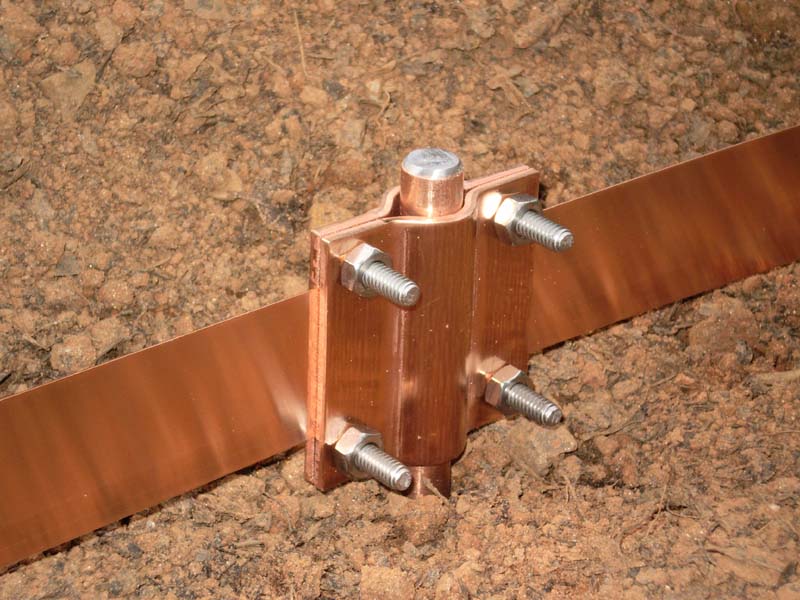What is Grounding?

The earth itself is a conductor. Soil, rock, and water are all capable of conducting electricity. Some materials conduct better than others. Sea water for example conducts quite well because of certain minerals in the water.
Sometimes we need to make an electrical connection to the earth. A ground rod is the most common item used to make this “ground” connection. Driven into the soil, the ground rod is in firm contact with the soil. Ground rods are typically about 5/8 inch diameter and 8 feet long, but other diameters and lengths are also used. A connection is then made to the top of the ground rod. The connection can be a mechanical connection (clamp), or a welded or brazed connection. Wire is the most common conductor attached to the top of a ground rod, but braid or strap can be used as well, each with its own advantages and disadvantages.
In a “ground system”, multiple ground rods are often driven into the ground. It is important that all ground rods be bonded together. In other words, a conductor should connect all of the ground rods together. That conductor is usually buried in the soil. The conductor itself makes additional contact with the soil, usually further improving the ground system. This bonding together helps make sure that there is no voltage potential between different parts of the ground system. This is especially important during a lightning strike, when there could be thousands of volts of potential between unbonded ground rods.
This short article isn’t intended to provide an in-depth explanation of grounding, or cover all aspects of lightning protection, but hopefully it will provide the reader with some important basics.

